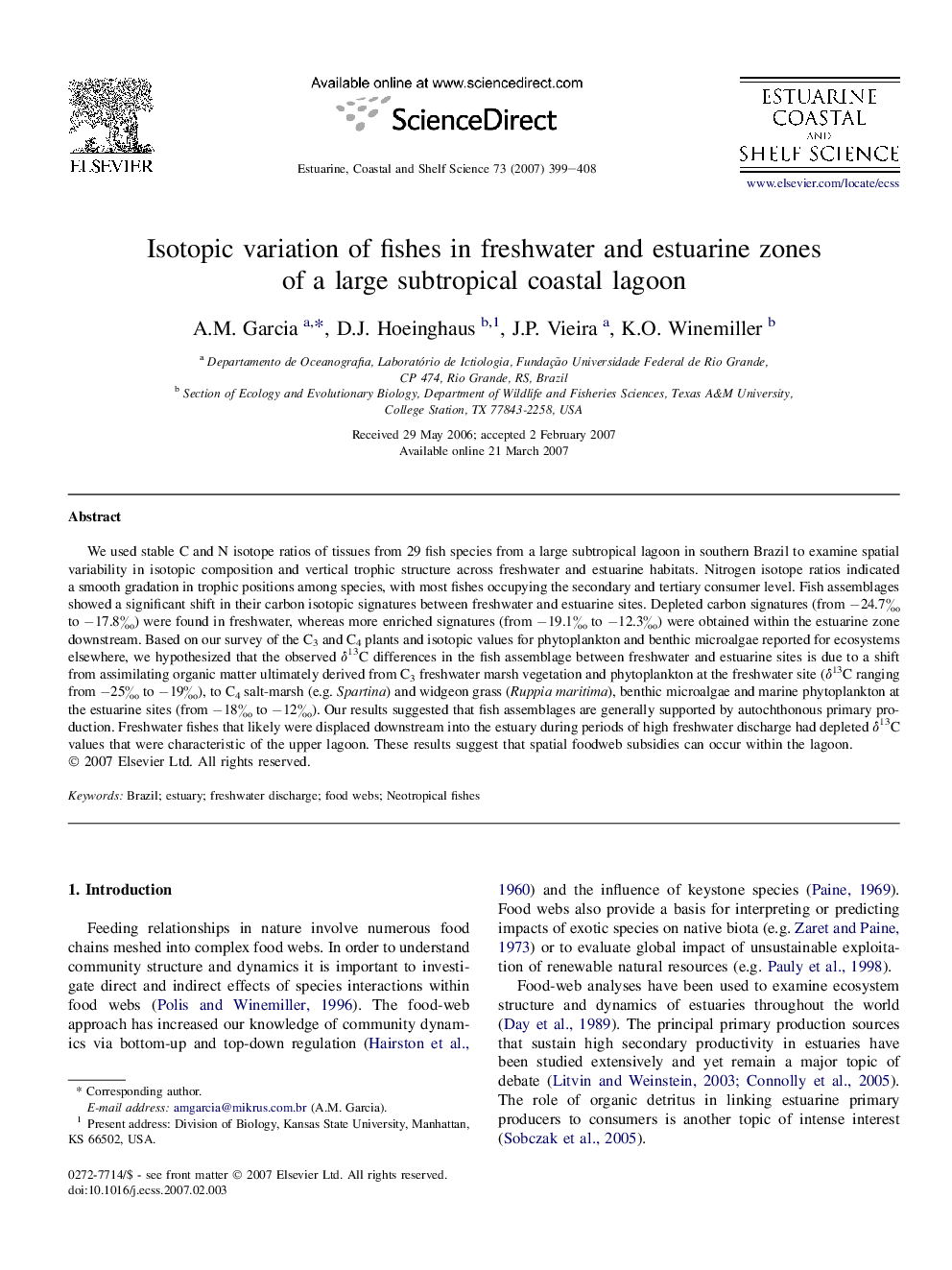| Article ID | Journal | Published Year | Pages | File Type |
|---|---|---|---|---|
| 4541778 | Estuarine, Coastal and Shelf Science | 2007 | 10 Pages |
We used stable C and N isotope ratios of tissues from 29 fish species from a large subtropical lagoon in southern Brazil to examine spatial variability in isotopic composition and vertical trophic structure across freshwater and estuarine habitats. Nitrogen isotope ratios indicated a smooth gradation in trophic positions among species, with most fishes occupying the secondary and tertiary consumer level. Fish assemblages showed a significant shift in their carbon isotopic signatures between freshwater and estuarine sites. Depleted carbon signatures (from −24.7‰ to −17.8‰) were found in freshwater, whereas more enriched signatures (from −19.1‰ to −12.3‰) were obtained within the estuarine zone downstream. Based on our survey of the C3 and C4 plants and isotopic values for phytoplankton and benthic microalgae reported for ecosystems elsewhere, we hypothesized that the observed δ13C differences in the fish assemblage between freshwater and estuarine sites is due to a shift from assimilating organic matter ultimately derived from C3 freshwater marsh vegetation and phytoplankton at the freshwater site (δ13C ranging from −25‰ to −19‰), to C4 salt-marsh (e.g. Spartina) and widgeon grass (Ruppia maritima), benthic microalgae and marine phytoplankton at the estuarine sites (from −18‰ to −12‰). Our results suggested that fish assemblages are generally supported by autochthonous primary production. Freshwater fishes that likely were displaced downstream into the estuary during periods of high freshwater discharge had depleted δ13C values that were characteristic of the upper lagoon. These results suggest that spatial foodweb subsidies can occur within the lagoon.
